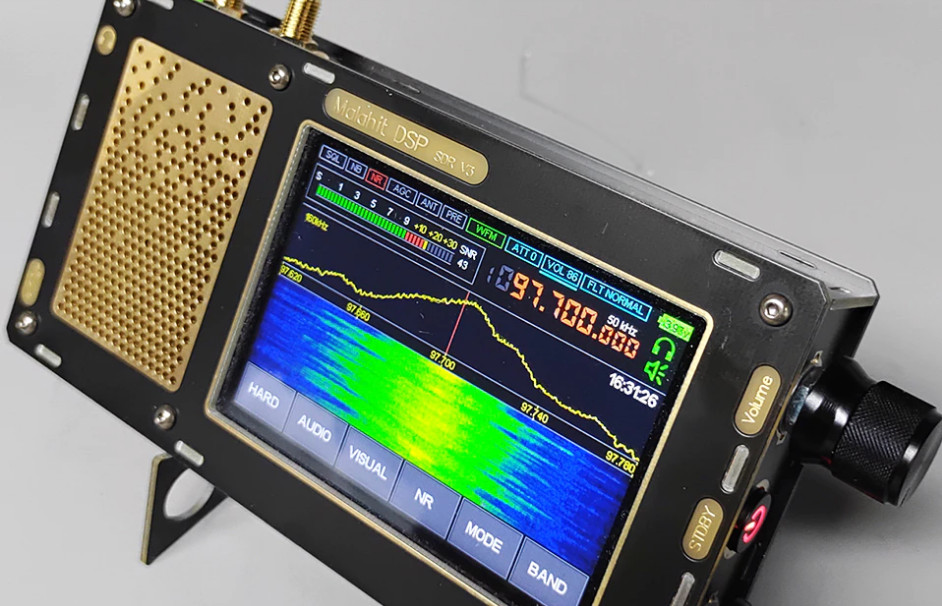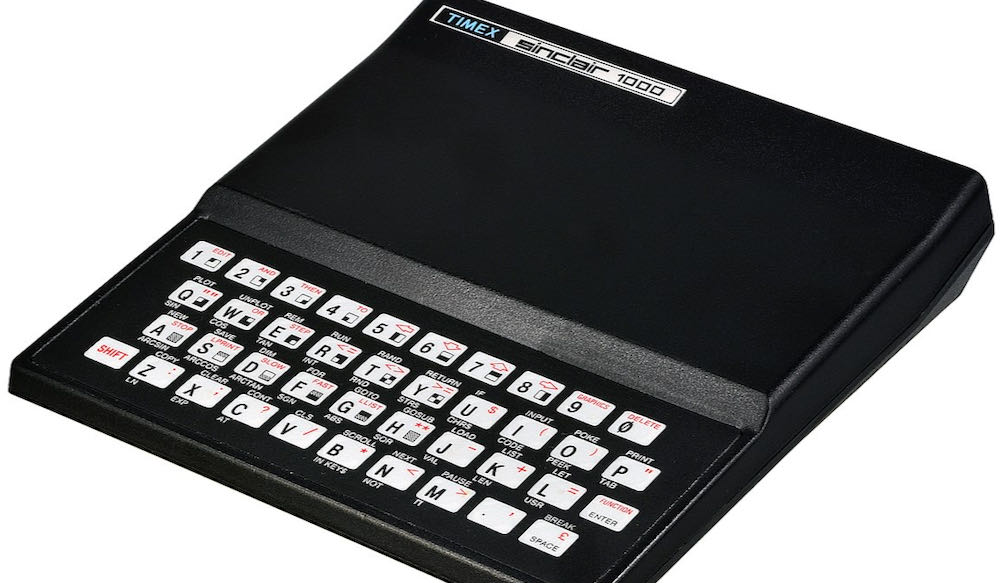
Special Broadcast:
México le canta a las Américas (Mexico Sings To the Americas)
Date/Time: Tuesday, September 28th, 0300-0400 UTC**
**Monday, September 27 2200-2300 Mexico City Time / CDT
WRMI 5800 kHz
In honor of the 200th anniversary of the end of the Mexican War of Independence, a special hour of Mexican music hosted by Luis Alejandro Vallebueno with guests Gabriela Ortíz and “Uncle Bill” Tilford will air on WRMI with support from Grupo DX México. It will be in Spanish and directed towards Central and South America, but the back end of the transmission should be listenable in most of North America and parts of Western Europe and Africa. The music will be a combination of world-famous artists and others probably not known outside of Mexico. There will also be some items regarding history, customs and shortwave in Mexico including special appearances by a veteran of Radio México Internacional (aka XERMX in its days on shortwave) and a long-time member of Grupo DX México.
Sam found where genealogy and radio meet
Many thanks to SWLing Post contributor, Sam Alcom (KB3DFJ), who shares the following guest post:
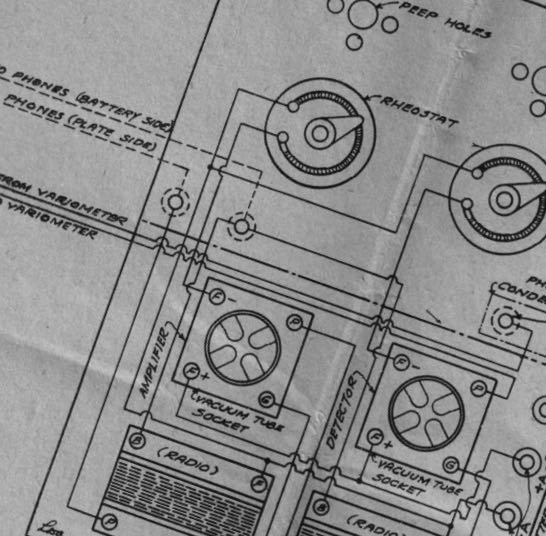 Genealogy and radio meet
Genealogy and radio meet
by Sam Alcom (KB3DFJ)
Who knew two of my hobbies – genealogy and radio – would joyfully collide in such an unexpected way?
My grandfather died in the 1950s when I was just a few months old, so I didn’t know him, let alone have some misty recollection of him. Seemingly, our only connection was the DNA bloodline though my father.
But as I dove into my family’s history, one web search led me to William H. Alcorn and 3ADJ. What the heck was 3ADJ? I dug deeper and found Amateur Radio Stations of the United States, U.S. Department of Commerce, Radio Division from June 30, 1924. Both of us were hams!
He was licensed as amateur radio station 3ADJ in Port Norris, N.J. with authorization to operate up to 50 watts.
I found him and his 3ADJ callsign again listed in 1925 in the Department of Commerce, Bureau of Navigation, Radio Service publication. The “3” in his sign threw me for a brief loop, but I learned that in the early days of radio Southern New Jersey was part of the third call district along with Delaware, Maryland, Virginia, certain counties of Pennsylvania and the District of Columbia.
The worldradiohistory.com website, a goldmine for anyone delving into all aspects of broadcasting’s past, led me to more publications where I spied my grandfather in the late fall 1925 edition of Radio Listeners’ Guide and Call Book and the 1926 edition of Citizens’ Radio Call Book and Complete Radio Cyclopedia.
The last radio trace I find was in the June 30, 1927, edition of the Amateur Callbook.
It was around this time that the U.S. began using “W” to start callsigns and I wondered if my grandfather continued with his radio hobby under the new designation. I looked up W2ADJ and found William Czak of West Brighton, N.Y., owning that sign. Likewise, W3ADJ belonged to the University of Maryland in College Park, Md. Both were from 1929.
I dug a little deeper to learn if he possibly had been an amateur prior to 1924, but I saw 3ADJ licensed to Horace Derby of Norfolk, VA., 1920 through 1923.
His amateur radio interest appears to have started sometime after 1921 and a stint in U.S. Navy as a Seaman Second Class and then seems to have waned – at least license-wise – as marriage and the first of my aunts, uncles and my dad were being born. I wonder if my dad had known about his dad’s radio hobby. In all the years I’ve been a licensed ham and bono fide radio nerd, he never mentioned it.
Of course, learning on this radio connection to my grandfather raised a host of other questions. Did he enjoy CW as much as I do? What kind of contacts was he making with 50 watts? Would he have admired the WAS and DXCC award certificates hanging on my wall? Would my hefty binder of shortwave QSL cards impressed him?
So, I’ll keep poking, looking for more radio connections. Who knows, maybe, somewhere, there’s a 3ADJ QSL signed by my grandfather.
Dan adds updates to his Malahit SDR and variant reviews
Many thanks to SWLing Post contributor, Dan Robinson, for the following update to his previous post regard the DSP-2 and HFDY Malahit SDRs:
Malahit and HFDY Updates
by Dan Robinson
HFDY CLONE: As noted by a reader in comments, the Chinese-made HFDY leaves out a large portion of the military AIR band, with no coverage from 250MHz to 400MHz, or about 150MHz, whereas the Russian-made DSP2 only loses 20MHz from 380MHz to 400MHz. This may be of concern for some readers, others not.
RUSSIAN DSP-2: As users of the Russia-made DSP-2 may or may not have noticed, the current firmware shows SIX memory bank pages when there are only 5. This appears not to have been discussed much on the Malahiteam Telegram group or elsewhere. In response on this, Georgiy of Malahiteam says this “is normal and for our future features” so clearly there are future plans that we are not aware of.
CHINESE-MADE FIRE BROTHERS CLONE: On September 21st, I took delivery of another China-manufactured clone, with a heavy metal cabinet, a vertical format with controls on top, and twin front-firing speakers. Obtained via Alibaba, and branded as “Fire Brothers” this has a thick built-in telescopic antenna and a separate SMA jack which the maker describes as “[supporting] a better external shortwave antenna”
On Alibaba, prospective buyers of this receiver are given two options: Type 1: 50KHz-2GHz without firmware updates supported, and Type 2 with support for updates. The unit did arrive with 1.10c Malahit firmware with a 160 kHz bandscope width.
As noted above, this China-manufactured clone also blocks 200 mHz – 400 mHz and shows the Msi001 chip and STM32h743 and a claimed blocking figure of 85dB and sensitivity up to 250MHz of 0.3?V = 10dB. The battery is described as 5000 mAh and presumed to be flat type Lithium Ion.
The only thing included with this clone, which arrives in a plain black box marked “Fire Bros.Radio” is a USB-C cable. That’s in stark contrast with the HFDY clone which comes in a high quality fabric zipper case, flexible whip antenna, USB-C cable, and a small metal stand.
The Fire Brothers manufacturer highlights the “high quality speakers” which not only fire out the front of the receiver, but also wrap around with openings on left and right sides of the radio. My first tests show that audio is indeed quite nice, certainly equal to the Russia-made DSP-2, possibly an improvement on the HFDY clone which has a single front-firing speaker.
I’ll have more on this Chinese clone and some comparisons with the DSP-2, HFDY, and Afedri SDRs, in future articles here on SWLing Post.
Cities and Memory: “Remix and reimagine the world of shortwave radio”
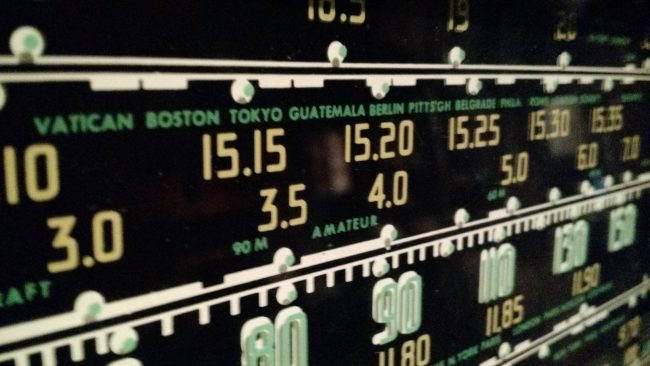 I’m absolutely chuffed to announce that the excellent Cities and Memory sound project has partnered with the Shortwave Radio Audio Archive for an all-new take on the soundscape of cities, and YOU are invited to be part of it.
I’m absolutely chuffed to announce that the excellent Cities and Memory sound project has partnered with the Shortwave Radio Audio Archive for an all-new take on the soundscape of cities, and YOU are invited to be part of it.
From Cities and Memory:
Open call – remix and reimagine the world of shortwave radio
Shortwave radio is one of the most fascinating sonic worlds – capturing vital moments in world history as well as pirate radio, clandestine stations, secretive number stations and military and spy radio, all of humanity is there to be listened to at the turn of a dial.
We’re delighted to have teamed up with The Shortwave Radio Archive to present 100 incredible recordings from the history of shortwave radio all over the world for artists to remix and reimagine.
Shortwave Transmissions is our latest global project, and we’re calling for sound artists and musicians to get involved by reimagining shortwave radio recordings from across the world.
Here’s how to get involved:
-
- Email us to let us know you’re interested – and we’ll send you the database of recordings to choose from.
- Let us know your top two choices, and we’ll allocate one of those sounds to you to work with.
- Create your composition – it must contain some elements of the original recording in some form, but otherwise is a completely free composition (music, sound art, radio art, composition, narrative storytelling – everything is valid!).
- Submit your composition – the final deadline will be Sunday 14 November.
There are some incredibly rich recordings to work with as source material – here is just a sample selection:
-
- Recordings from the mysterious “numbers stations” around the world
- Coverage of world-changing events such as 9/11, the invasion of Kuwait, Kennedy’s assassination, Tiananmen Square protests, the death of Fidel Castro and many more
- Rare international recordings from St. Helena, Nicaragua, Saudi Arabia, the Falkland Islands and Antarctica
- Recordings covering a huge period of time from 1934 through to the present day
- Space travel documented, including the Sputnik, Apollo and Challenger missions
- Recordings of famous voices such as Winston Churchill and King George V
- Station IDs, interval signals and final broadcasts from radio stations
Compositions will be presented in the Shortwave Transmissions project in late November and to thousands of listeners across the Cities and Memory podcast, and a selection of compositions will be chosen for an accompanying album release.
Sound artists and mixers, jump in to the Archive and see what you can unearth from the depths of our audio. We hope you’ll want to part in what we believe will be one of the most intriguing projects we’ve launched; in partnership with Cities and Memory, there’s no doubt it can be. We look forward to your contributions!
FTIOM & UBMP, September 26-October 2
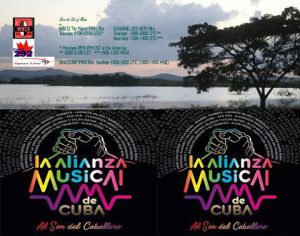

From the Isle of Music, September 26-October 2:
This week we reprise our episode featuring Manolito Simonet, producer/participant in the album Al son del caballero by the Alianza Musical de Cuba. This tribute to Adalberto Álvarez won a Grand Prize, the Producer’s Prize, and one of the Popular Dance Music prizes in Cubadisco this year. Aldalberto passed away recently, and the following week will be a special
tribute to his life and music.
1. For Eastern Europe but audible well beyond the target area in most of the Eastern Hemisphere (including parts of East Asia and Oceania) with 100Kw, Sunday 1500-1600 UTC on SpaceLine, 9400 KHz, from Sofia, Bulgaria (1800-1900 MSK)
2. For the Americas and parts of Europe, Tuesday 0000-0100 UTC on WBCQ, 7490 kHz from Monticello, ME, USA (Monday 8-9PM EDT in the US).
3 & 4. For Europe and sometimes beyond, Tuesday 1900-2000 UTC and Saturday 1200-1300 UTC on Channel 292, 6070 kHz from Rohrbach, Germany.
Our Facebook page is https://www.facebook.com/fromtheisleofmusic/
Our V-Kontakte page is https://vk.com/fromtheisleofmusic
Our Patreon page is https://www.patreon.com/tilford
Uncle Bill’s Melting Pot, September 26-October 2:
In episode 236, we present a musical tribute to the 50th anniversary of the Festival Rock y Ruedas de Avándaro, Mexico’s answer to Woodstock.
The transmissions take place:
1.Sunday 2200-2300 (6:00PM -7:00PM EDT) on WBCQ The Planet 7490 kHz from the US to the Americas and parts of Europe
2. Tuesday 2000-2100 UTC on Channel 292, 6070 kHz from Rohrbach, Germany for Europe.
3. Saturday 0800-0900 UTC on Channel 292, 9670 kHz from Rohrbach, Germany for Europe with a directional booster aimed eastward.
Our Facebook page is https://www.facebook.com/UncleBillsMeltingPot/
Our V-Kontakte page is https://vk.com/fromtheisleofmusic
Our Patreon page is https://www.patreon.com/tilford
Malahit DSP-2 versus Chinese Clone: Taking the Gloves Off
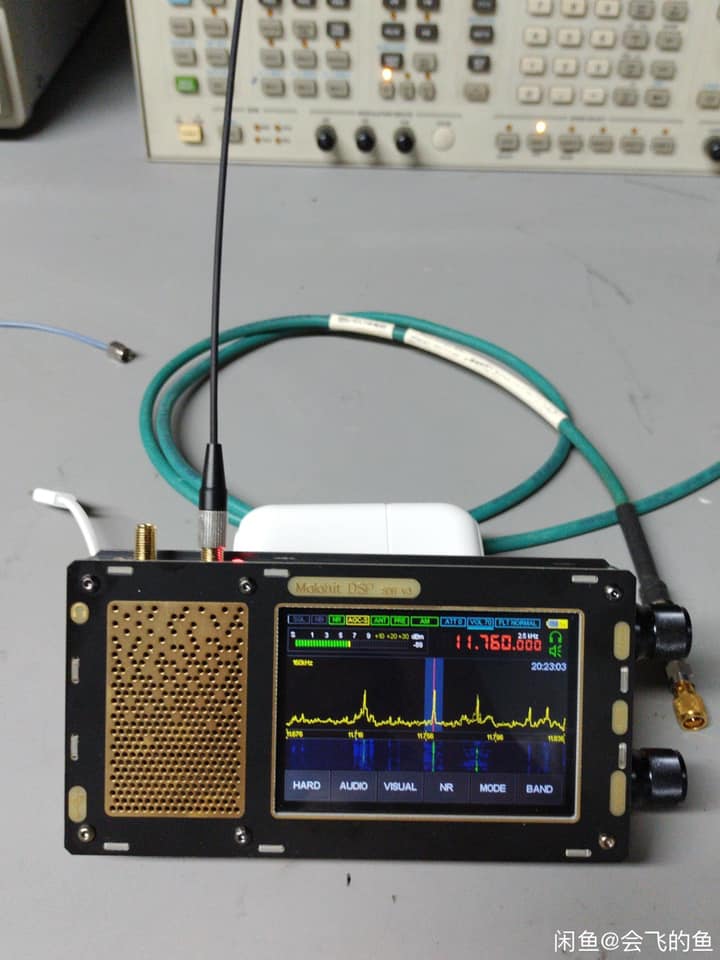 Many thanks to SWLing Post contributor, Dan Robinson, for the following guest post:
Many thanks to SWLing Post contributor, Dan Robinson, for the following guest post:
Malahit 2 versus Chinese Clone: Taking the Gloves Off
New DDC (Direct Digital Conversion) Version in Development
by Dan Robinson
It’s been a few weeks since my last commentary on the Malahit/Malachite, which as of this writing remains at the DSP-2 level, though there are continuing hints from the Malahiteam in Russia about future changes, including a DDC version.
All of the observations I made in previous articles are unchanged. As of today in mid-September, the latest test firmware version posted by the Malahiteam remains M2_FW2_10D. This includes a widening of the waterfall bandwidth from 160 kHz to 192 kHz. See my previous articles for more information.
Recently, I obtained a Chinese clone, one which will be familiar to anyone who has taken a dive into the clone market. This one is by HFDY and is immediately recognizable for its front speaker and longer slim rectangular form factor.
The HFDY (Malahit SDR V 3) has two high quality black metal encoder knobs on the right, with a large power button between, and USB-C and a headphone jack on the left side. On the bottom are two OFF/ON slide switches, one marked for 3.3 volts and the other BOOT(O).
Radio Waves: Is the Titus II Still Alive, Navajo Broadcasters Make History, Portalo Stranah, and R.I.P. Sir Clive Sinclair
Radio Waves: Stories Making Waves in the World of Radio
Because I keep my ear to the waves, as well as receive many tips from others who do the same, I find myself privy to radio-related stories that might interest SWLing Post readers. To that end: Welcome to the SWLing Post’s Radio Waves, a collection of links to interesting stories making waves in the world of radio. Enjoy!
Many thanks to SWLing Post contributors Dennis Dura, Zarpo, Maxime, and the Southgate ARC for the following tips:
Is the Titus II portable Android tablet shortwave SDR close to release? (RTL-SDR)
The PatronX Titus II SDR is something we’ve been posting about several times since 2016, but in the end it was never released and assumed to be vaporware. However, we found that the website for the Titus II SDR was updated only a few weeks ago, and pricing details have been added advertising $120 and $150 for two versions of the product. But on the new website there is no store, just an email link to contact sales for ordering information. We contacted that email two weeks ago for more information but have not received a reply back yet.
The PantronX Titus II was advertised to be a portable Android tablet based SDR that would feature a 100 kHz – 2 GHz tuning range, and software that focuses on HF digital DRM decoding, as well as DAB on VHF. Computer rendered images show the tablet housed in a portable carry enclosure with two speakers. [Continue reading…]
Two Navajo broadcasters make history announcing D1 college football game in Navajo language (KRQE)
ALBUQUERQUE, N.M. (KRQE) – Two men from the Navajo Nation made history at Saturday’s Rio Grande Rivalry game, with a first-of-its-kind radio broadcast in Albuquerque. For the first time ever, two men from the Navajo Nation announced a D-1 college football game in the Navajo Language.

